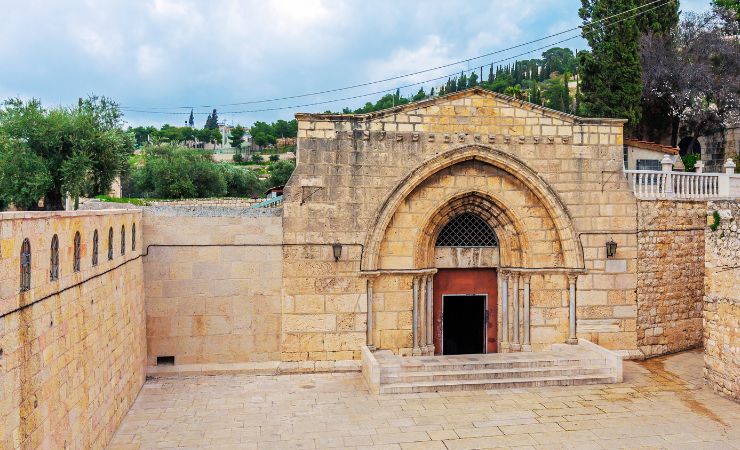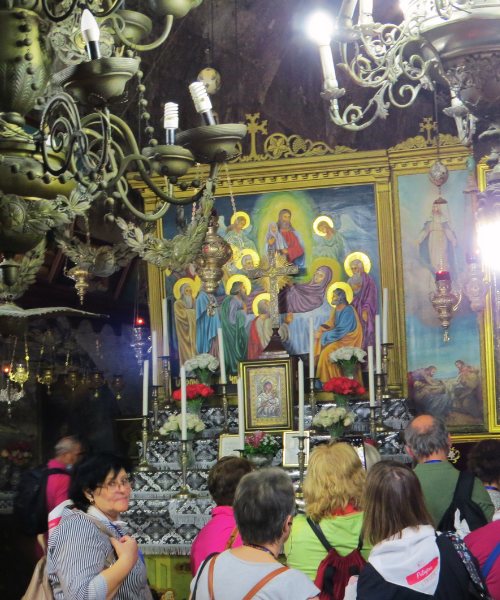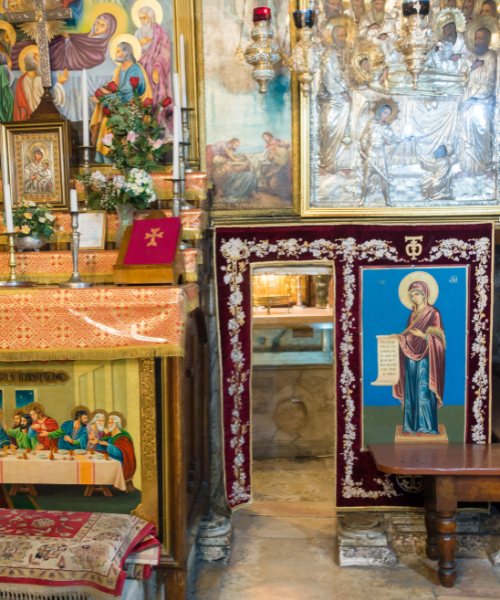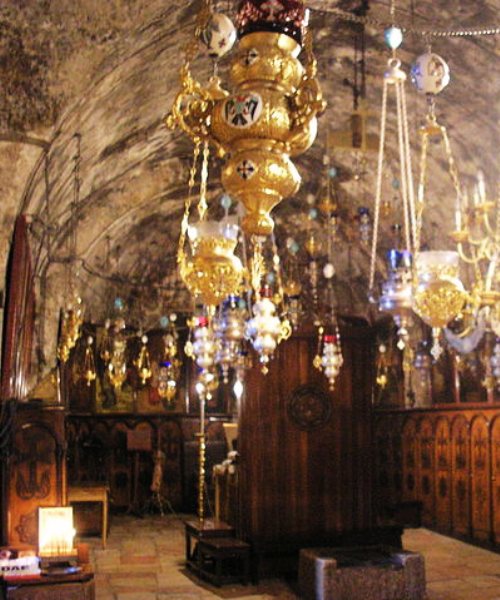Beholding the Past: A Voyage to the Mary's Tomb in Jerusalem
Introduction
Among Jerusalem’s many sanctified sites, one that never ceases to fascinate is The Tomb of the Virgin Mary that was built during the time of the Crusaders more than 1,000 years ago. The current tomb is located under a magnificent church that no longer exists.

The Location of Mary's Tomb
Nestled in the valley of Kidron, next to the Mount of Olives, Mary’s Tomb is an emblem of sacred history. The site, located at the foot of the Mount of Olives, is close to the Lion’s Gate and the Old City walls.
Biblical Context
While the Tomb of the Virgin Mary isn’t explicitly mentioned in the Bible, the site is deeply ingrained in Christian tradition and ecclesiastical history. A broad consensus among Eastern Orthodox, Oriental Orthodox, and some Anglican Christians traces the final resting place of Virgin Mary, the mother of Jesus Christ, to this sacred tomb.
Referencing the Apocryphal works, like the “Transitus Mariae,” the narrative recounts that Mary was buried near Gethsemane. Furthermore, ‘The Dormition of the Mother of God’, a feast celebrated by the Orthodox Church, echoes this tradition, linking the end of Mary’s earthly life to this spot in Jerusalem.
The Crusader Church: A Timeless Testament
During the era of the Crusaders, around the 12th century, the sacred site of Mary’s Tomb saw the establishment of a magnificent church, known to history as the Church of the Assumption (also referred to as the Church of Our Lady of Jehosaphat). Built directly above the tomb, the structure stood as a testament to the architectural grandeur and religious fervor of the time.
Mary’s Tomb resides in the crypt of the church. The space was reverently preserved by the Crusaders, evidencing their deep veneration for the Virgin Mary. Pilgrims descending into this crypt would have been engulfed in an atmosphere of sacred awe, beneath the very floors of the majestic structure above.
Sadly, the Crusader church was largely destroyed following Saladin’s conquest of Jerusalem in 1187.
During the latter part of the 14th century, Franciscan friars undertook the task of restoring the church to its former glory. However, in 1757, the site fell under the control of the Greek Orthodox clergy, who, in a sweeping move on Palm Sunday, claimed ownership of various Holy Land locations, including this one, leading to the eviction of the Franciscans. The Ottoman rule ratified this shift in power, known as the “status quo”, through their judicial system. From that point on, the tomb has been under the shared stewardship of the Greek Orthodox Church and the Armenian Apostolic Church of Jerusalem that alternate their stewardship of the sacred site on different days.
Despite this, the Franciscans have managed to retain possession of the Grotto of Gethsemane.
Archaeological Findings
- Ancient Inscriptions: Various inscriptions, some dating back to the 5th century. These inscriptions provide tangible evidence of the early Christian veneration of the site.
- Early Christian Iconography: The site has revealed traces of early Christian iconography, including depictions of Mary and other biblical figures.
- Crusader Church Evidence: Elements of the Crusader Church of the Assumption, built above the tomb in the 12th century. Intricately carved motifs, remnants of frescoes, and mosaic work provide insight into the aesthetics and religious iconography of the Crusader era.
- Crypt Preservation: Despite the destruction and subsequent reconstruction of the above church structure, the crypt where the Tomb of the Virgin Mary is located has been preserved across centuries. This highlights the deep respect and veneration for the Virgin Mary even during periods of conflict and change.
Sources and Additional Reading
See the Holyland – Mary’s Tomb
Slave Bazarsky – Tomb of Mary



Nearby Sites
- Garden of Gethsemane: Located mere minutes away, this historic garden is where Jesus prayed the night before his crucifixion.
- Church of All Nations: Also known as the Basilica of the Agony, it’s famed for its stunning mosaics and its association with the Gethsemane Garden.
- Dominus Flevit Church: Shaped like a tear drop to commemorate Jesus weeping over Jerusalem’s future destruction, it offers breath-taking panoramic views of the Old City.
- Mount of Olives: A historically significant location with numerous religious sites including Pater Noster, Dominus Flevit, and the Church of Ascension.



